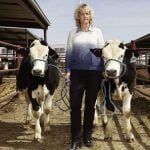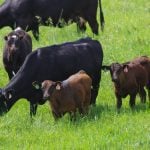Mother Nature will always be a factor in farming. The widespread droughts in Western Canada and some early spring frosts in parts of the country have reminded farmers they need to consider how to help crop plants deal with environmental stress.
Growers are therefore increasingly interested in the merits of in-season biostimulant products which can help reduce the effects of abiotic stress during crop development and improve productivity. A number of new products have been marketed from companies like Acadian Seaplants, Timac Agro and Austrian-based Hechenbichler.
“Biostimulants have a vast array of composition and can be microbial-based or plant-based,” says Hechenbichler’s Technical Lead for Canada, Dr. Logan Skori, who did his PhD in Plant Science at the University of Calgary, specializing in the field of plant development and abiotic stress.
“Having first-hand experience on my family’s farm opened my eyes to the challenges that crops face every year,” Skori says. “During my PhD, I spent numerous hours investigating plant stress and how plants respond to overcome it. When I first investigated the composition of Amalgerol Essence, I was instantly intrigued to see if this product could bring added value to Canadian farmers.”
Amalgerol has a long history and has been utilized on European farms for over 40 years and indeed, Manitoba farmer Wilfred Scherner and his family have used the product for over 30 years. He says “Amalgerol is a product that is easy to use, shows effectiveness on the plant immediately and even greater improvements in the soil over the long run. Amalgerol reduces input costs and makes farming less stressful.”
The new formulation, Amalgerol Essence, is currently being trialled in several crops (canola, peas, lentils, soybean) in Ontario and across the Prairies. Amalgerol is being tested in canola plots containing reduced nitrogen fertilization. It’s used as a foliar application that can be tank mixed with in-season herbicide and fungicide products. It’s registered in Canada and certified for organic farming in the European Union.
Our technical staff in Canada and Europe can provide information to farmers on Amalgerol Essence and how it can be incorporated into their farming practices to help reduce the detrimental effects of abiotic stress,” says Skori. “They can also provide trial data from European field trials and the ongoing Canadian trials.”
A look inside
According to Hechenbichler, the ingredients in Amalgerol and Amalgerol Essence target two primary avenues: improvements to plant health and improvements to soil health. Amalgerol Essence contains ingredients which help plants combat stress by promoting root growth and reduce production of molecules following exposure to environmental stress that cause damage and reduce plant productivity. To target soil improvement, Amalgerol Essence contains components that help promote and stimulate soil bacteria populations which are beneficial for uptake of nutrients and helping to breakdown unwanted crop residues.
Amalgerol Essence is composed of seven major active ingredients, all naturally sourced:
- Amino acids, which help activate stress responses and induce antioxidant defence systems inside plants
- Antioxidants, which help destroy harmful molecules that cause cell damage following abiotic stress exposure
- 3% Potassium + 3% Nitrogen, which are derived from organic sources
- Herbal extracts containing bioactive compounds to promote plant health and growth
- Plant hormones, derived from seaweed extracts that help trigger growth and development of crops, particularly in root tissue.
- Alginate derived from seaweed, which has water-retention properties, and functions as a soil conditioner
- Organic carbon, which can stimulate soil microbes that are responsible for breaking down straw and converting to organic matter








